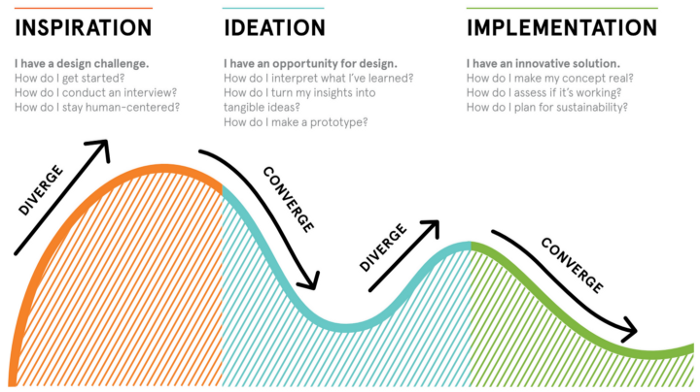
Design thinking is a human-centred framework that uses empathetic, creative, and analytical skills to solve problems.
This methodology has been disrupting the way in which we do business, by putting empathy in the centre of any developing strategy. Empathy (as a tool, not just as a “value”), is the best way to connect with consumers, to understand them deeply, specially by observing and mapping out their behaviours; and therefore, is essential in order to find key insights that will lead to winning business strategies.
Some of the most famous representations of Design Thinking have been popularised by IDEO, an international design and consulting firm founded in Palo Alto, California; however you can find different visualisation of the process by Design Council and by Stanford d.school.
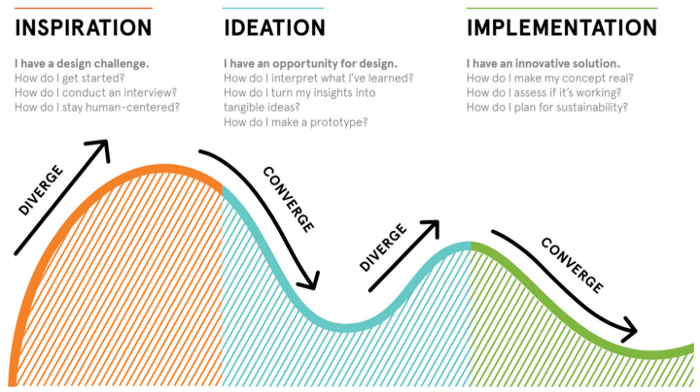
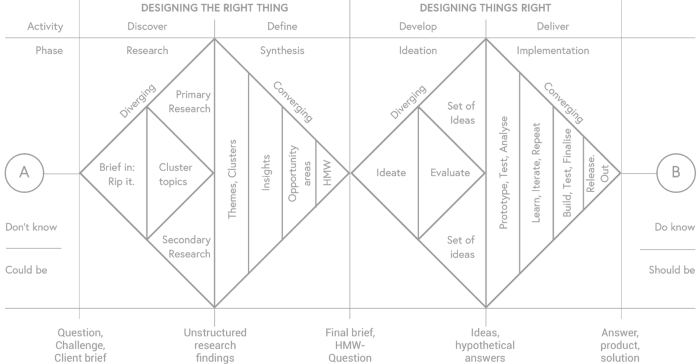
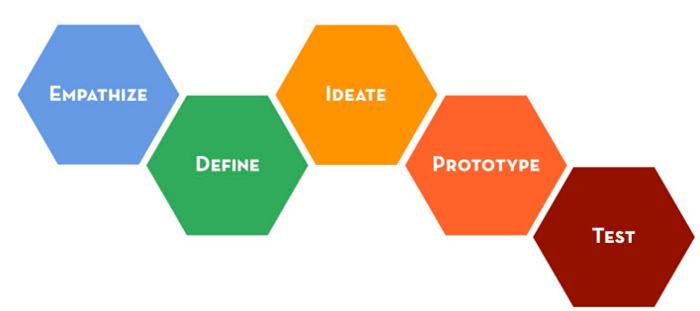
Phases of this process are either diverging or converging. During a diverging phase, you try to open up as much as possible without limiting yourself, whereas a converging phase focuses on condensing and narrowing your findings or ideas. In each of the different phases there are several sets of tools that can be used to empathise, map behaviours, find key problems and propose real and actionable solutions.
Some of the tools we focused on at the community meet-up where:


The Empathy Canvas

DESIGN YOUR OWN LIFE
Finally we dived into the practical everyday life use of design thinking framework. We proposed a 7 step plan covering all major phases of Design Thinking with the objective of “designing your own life”.
This is a summary of what we shared during the meet-up and the steps you can put into action right-away!
Step 1. Keep a Journal of Activities and Feelings
Think about this questions while filling up your journal.
When do you feel completely involved in the activity you’re carrying out? When are you most mindful?
Which activities make you happy?
When are you working at your peak level?
Which activities make you feel calm and serene?
When do you feel that you’re in the state of flow?
What are you doing when you feel the most animated and the most present?
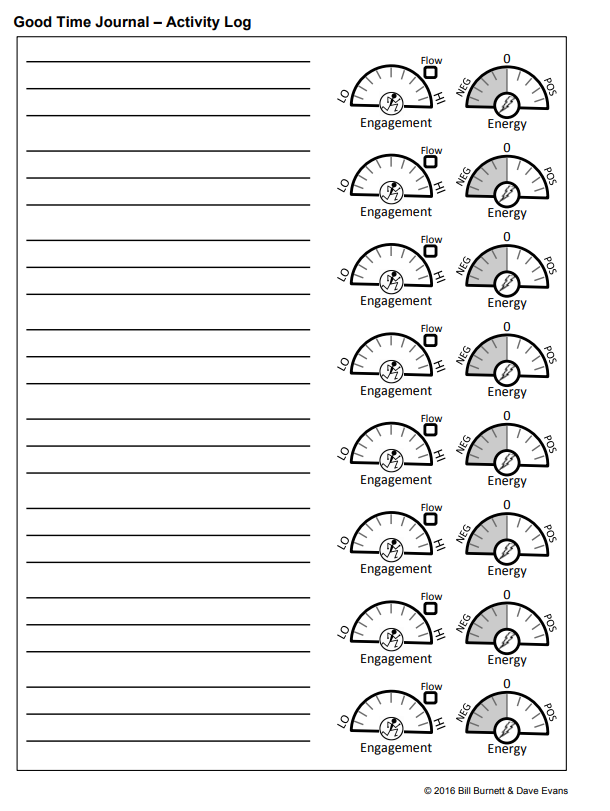
Step 2. Use Empathy Map
Cluster Personal Data Log; Understand your Pains and Gains
One recommendation is to fill the map putting yourself in the third person. In order to do a better analysis just extrapolate yourself from the writings in your log and complete the map taking a step back and imagining you’re observing someone else.

Step 3. Odyssey plan exercise.
Design 3 different versions of your next five years.
These are trajectories which you could realistically pursue. Your scenario plans the development of your life that is already in route. A desirable one, but closer to what you already have in mind. The second plan is something like a plan B. (What if plan A is not possible?). The third plan is a wilder alternative for your next five years. For this one, imagine that you have no restrictions, you could have all the money and resources in the world.
Step 4. Define your “Design” Problem
What areas need improvement?
Step 5. Ideate
What actions, conversations could you take to improve those areas?
Step 6. Prototype & Test
Put those actions into a calendar and go work in your new habits.
Step 7. Iterate
Until you have created the life you want.
— — — — — — — — — — — — — — — — — — — — — — — — — — — — — —-
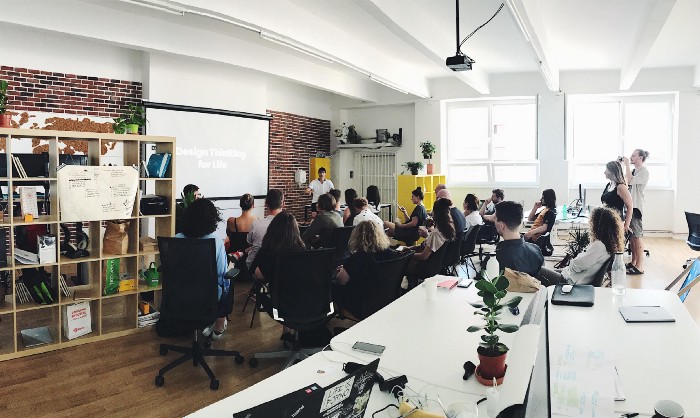
Thank you to everyone who attended for making this one the biggest and most inspiring community meet-up so far.
See you in the next one 😉
